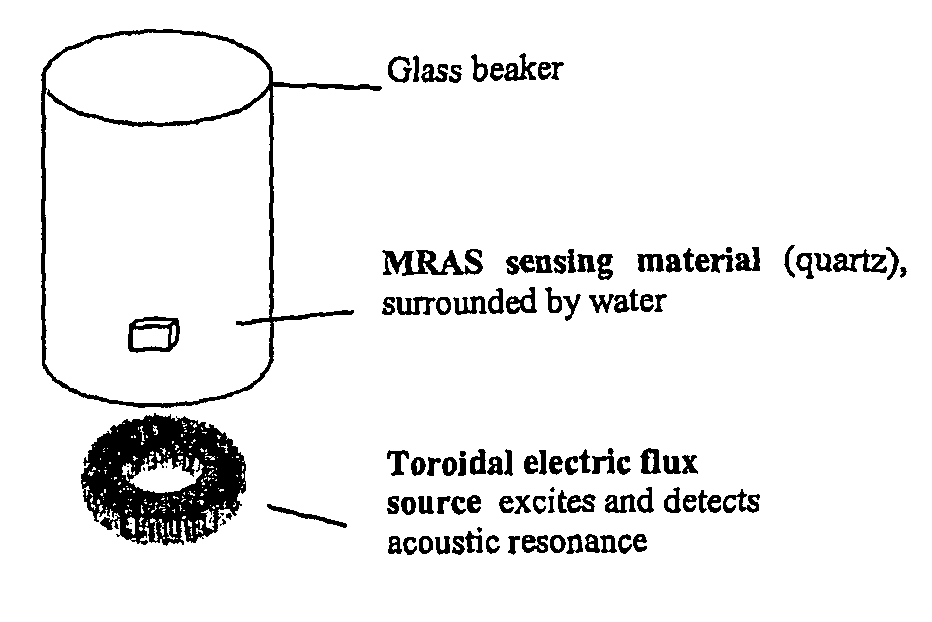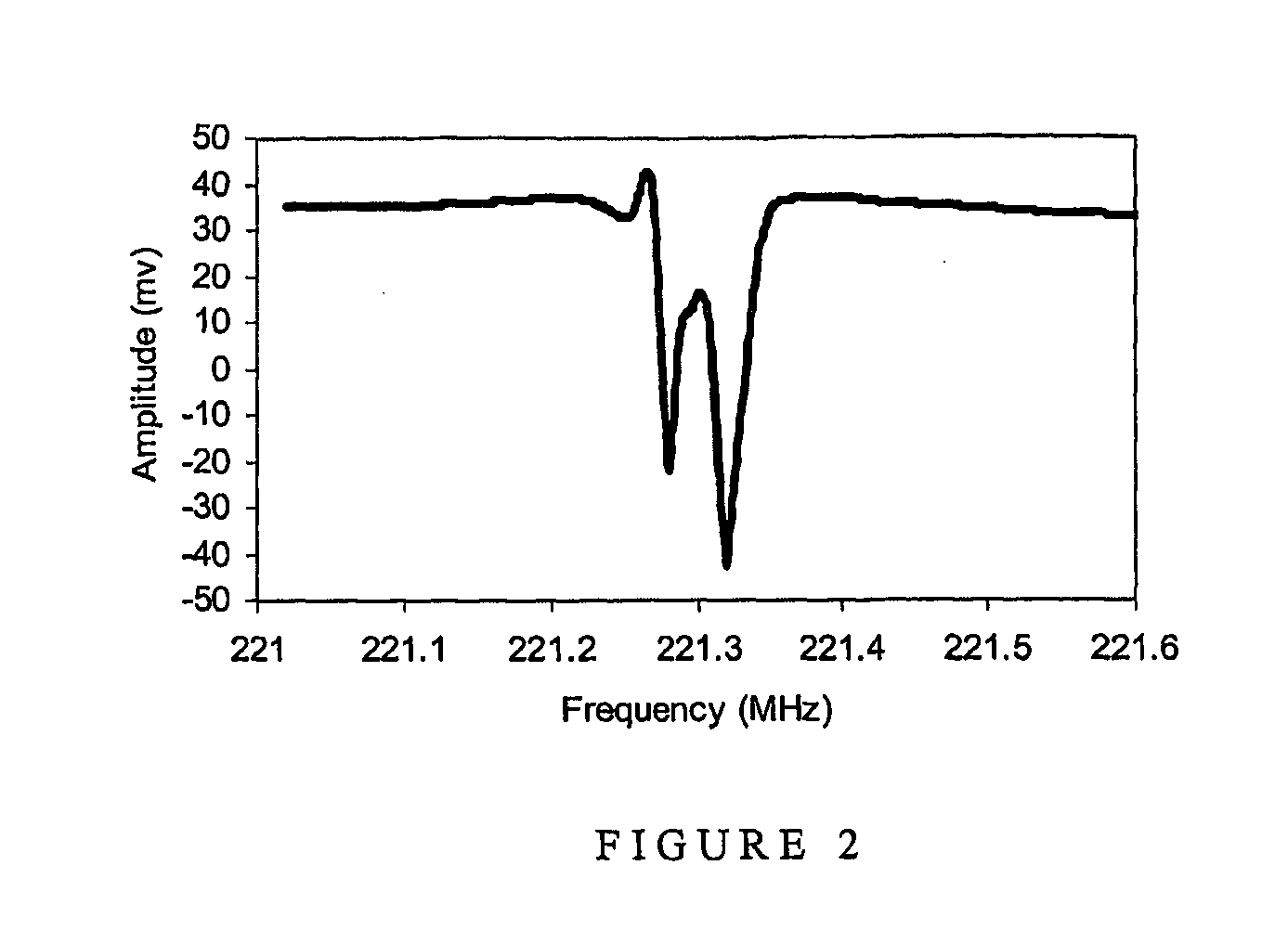Electromagnetic piezoelectric acoustic sensor
a piezoelectric acoustic sensor and electromagnet technology, applied in the direction of magnetic property measurement, instruments, material magnetic variables, etc., can solve the problems of achieve the goal of ensuring the sensitivity of the device, ensuring the robustness, and restricting any sensitivity improvement
- Summary
- Abstract
- Description
- Claims
- Application Information
AI Technical Summary
Benefits of technology
Problems solved by technology
Method used
Image
Examples
examples
[0052]Materials and Methods
[0053]Discs
[0054]Piezoelectric AT crystal blanks 12 mm in diameter and 0.25 mm thick were prepared to a fine optical polish. Devices were cleaned in chloroform, then acetone and finally isopropanol.
[0055]Fragments
[0056]The same piezoelectric crystal was also broken into approximately 40 to 50 pieces for testing. All fragments had resonance frequencies and amplitudes that would different from each other.
[0057]Beads
[0058]Beads or fragments with chemical coatings provide an ideal opportunity for accessing wirelessly chemical environments in tubes, chambers, microfluidics and arrays used in biotechnology. They can be frequency ‘tagged’ so that a large number of sensors can be scanned with a single coil.
[0059]Measurement Equipment
[0060]Toroid Z Measurements
[0061]The equipment selected for the measurement was the Hewlett Packard impedance analyser which operates at up to 1.8 GHz. It allows sample positioning at the measurement head so cable contributions to the ...
PUM
| Property | Measurement | Unit |
|---|---|---|
| diameter | aaaaa | aaaaa |
| thicknesses | aaaaa | aaaaa |
| diameter | aaaaa | aaaaa |
Abstract
Description
Claims
Application Information
 Login to View More
Login to View More - R&D
- Intellectual Property
- Life Sciences
- Materials
- Tech Scout
- Unparalleled Data Quality
- Higher Quality Content
- 60% Fewer Hallucinations
Browse by: Latest US Patents, China's latest patents, Technical Efficacy Thesaurus, Application Domain, Technology Topic, Popular Technical Reports.
© 2025 PatSnap. All rights reserved.Legal|Privacy policy|Modern Slavery Act Transparency Statement|Sitemap|About US| Contact US: help@patsnap.com



